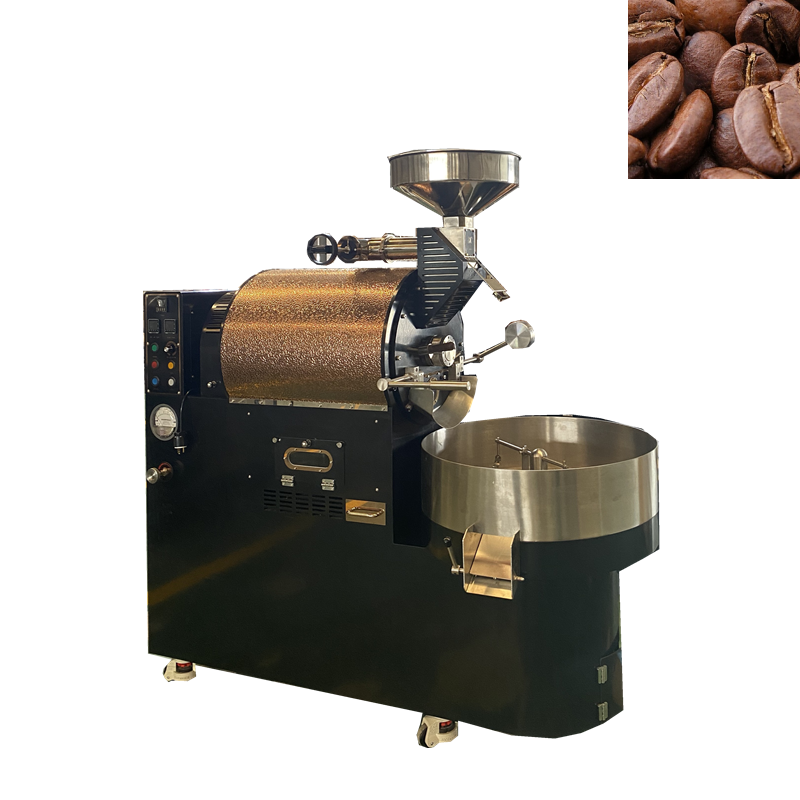The preheating time and temperature of the coffee roaster are the key factors affecting the roasting effect. Reasonable preheating can ensure the uniform and stable temperature in the roasting room and improve the roasting quality of the coffee beans. The following is a detailed description of the preheating time and temperature:
Preheating temperature
The preheating temperature usually needs to reach the initial temperature range required for baking, and the specific value needs to be set according to the baking goal:
Basic preheating temperature: It is generally recommended to preheat the roaster to 180℃-200℃, this temperature range can ensure that the coffee beans are evenly heated, avoid local overheating or unheated.
Deep roasting requirements: If deep roasting is required, the preheating temperature can be appropriately increased to 200℃-210℃, but the damper should be adjusted to prevent the coffee beans from coking due to high temperature.
Temperature stability: During the preheating process, ensure that the temperature fluctuation does not exceed ±5 ° C, which can be monitored by the temperature sensor in real time to avoid sudden temperature changes affecting the baking curve.
Preheating time
The preheating time must be adjusted according to the baking model, power, and ambient temperature. It is recommended to follow the following principles:
Basic preheating time: Small and medium-sized roasters are recommended to preheat for 10-15 minutes, and large commercial roasters need to be extended to 20-30 minutes to ensure that the baking room is fully heated.
Continuous roasting requirements: If you need to continuously roast multiple POTS of coffee beans, it is recommended to maintain low power preheating (such as 80℃-100℃) during each pot interval to avoid a sudden drop in temperature in the roasting room.
Special process requirements: Some special roasting processes (such as low temperature slow drying) need to extend the preheating time to more than 40 minutes to ensure that the temperature rises slowly and reduce the risk of coking on the surface of the coffee bean.
Operation suggestion
Temperature calibration: Before preheating, calibrate the temperature sensor to ensure that the displayed temperature is consistent with the actual temperature.
Throttle adjustment: Adjust the throttle to the maximum during preheating to promote heat circulation; After baking, gradually reduce the damper and control the temperature rise rate.
Baking curve record: After the preheating is completed, record the initial temperature, heating rate and first burst time and other parameters, so as to facilitate subsequent batch adjustment.
Matters needing attention
Insufficient preheating risk: insufficient preheating may lead to uneven heating of coffee beans, and the phenomenon of “sandwich” or “burnt edge”.
Excessive preheating problem: Prolonged preheating (more than 60 minutes) may accelerate the aging of the roaster. Avoid this problem.Influence of ambient temperature: the preheating time should be properly extended in low temperature environment, and the preheating time can be shortened in high temperature environment.


